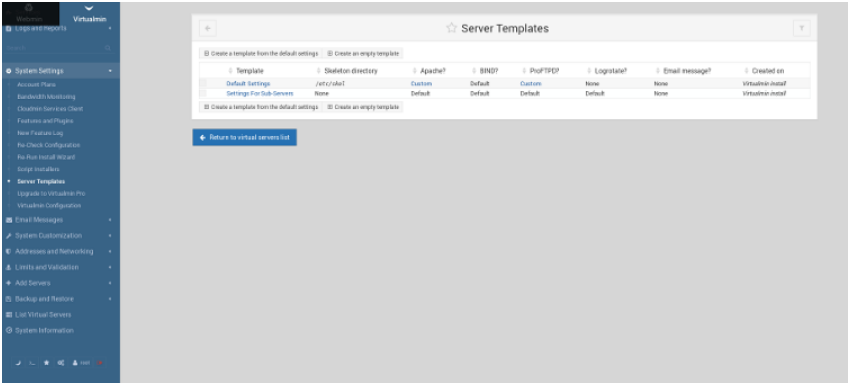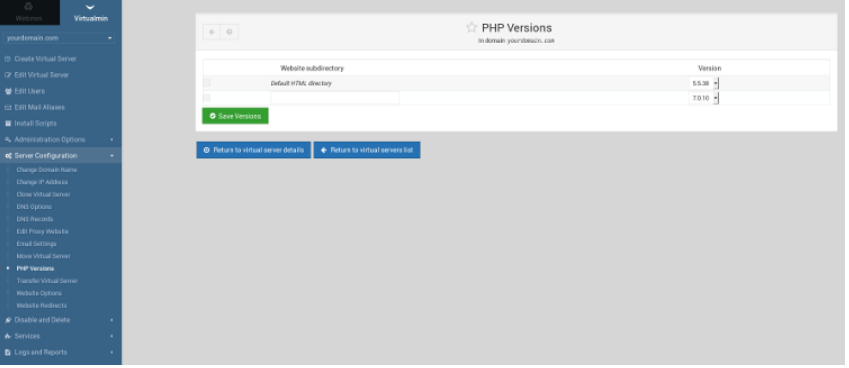Webmin allows you to manage multiple PHP versions on the same server, assigning different versions to various Virtual Servers or directories.
Requirements:
Webmin 1.8 on CentOS 7.
Steps:
1. Log In: Access your server as the root user.
2. Install PHP 5.6:
Install the SCL repo: yum install centos-release-scl
Install PHP packages:yum install rh-php56 rh-php56-php-mysqlnd
Install PHP 7.2:
Install the SCL repo: yum install centos-release-scl
Install PHP packages: yum install rh-php72 rh-php72-php-mysqlnd
4. Enable suexec_module:
Edit the configuration file: vi /etc/httpd/conf/httpd.conf
Uncomment the line: LoadModule suexec_module modules/mod_suexec.so
Save changes and restart Apache: service httpd restart
5. Log into Webmin:
Access your Webmin control panel.
6. Re-check Configuration:
In Virtualmin, navigate to “System Settings → Re-Check Configuration.”
If prompted, add 127.0.0.1 to the list of DNS servers and save.
7. Modify Server Templates:

- In the "Edit template section," select Apache website.
Automatically add appropriate SuExec directive? - Yes
Ensure the setting Automatically add appropriate SuExec directive? is set to Yes.
Default PHP execution mode: CGI wrapper (run as virtual server owner)
- Next, in the "Edit template section," select PHP Options.
Confirm that the Default PHP execution mode is set to CGI wrapper (run as virtual server owner).
Finally,
- Click Save.
From now on, all newly created Virtual Servers in Virtualmin will automatically recognize the different installed PHP versions.
8. Select PHP Version for Your Domain or Directory
To set the PHP version for your domain, follow these steps:
Select the desired Virtual Server from the list.
Navigate to "Server Configuration → PHP Version."

Here, you can pick the PHP version for the entire domain or assign different PHP versions to specific directories by entering the directory name in the provided field.